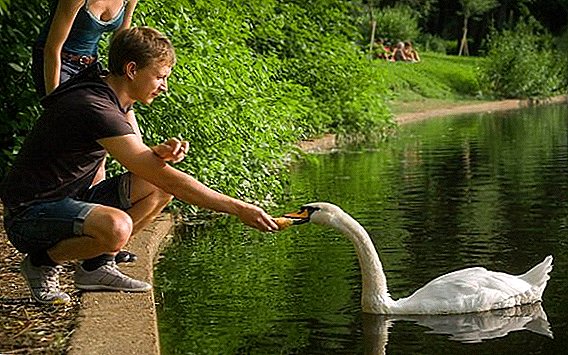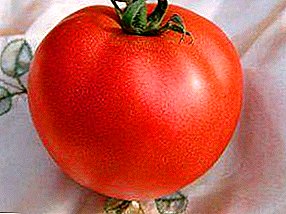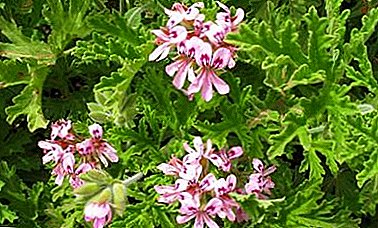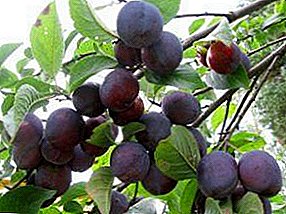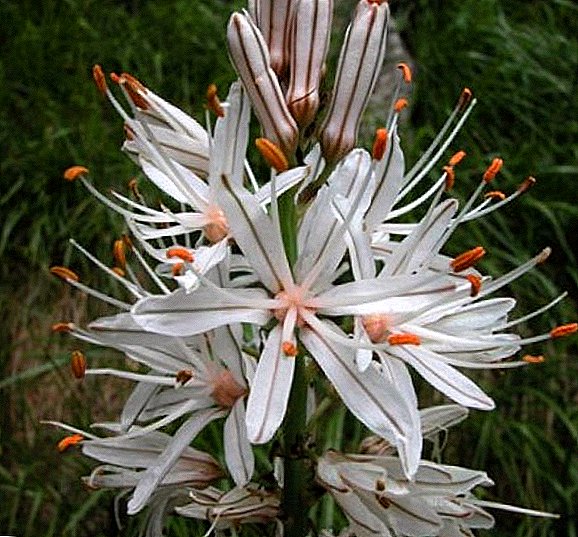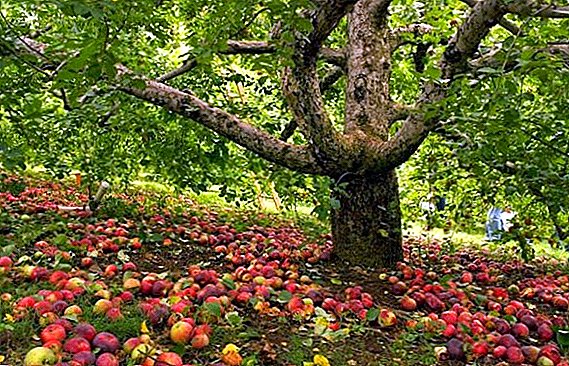 It often happens that older apple trees eventually begin to produce less and less harvest. But, starting with their replacement, you make a big mistake: the risk is great that the young sapling will not take root, you have to wait for a more or less abundant fruiting for a long time, and you can never be sure that it will be for apples. At the same time, a properly conducted rejuvenating pruning of old apple trees can breathe new life into your garden, and you will enjoy wonderful and fragrant fruits for many more years.
It often happens that older apple trees eventually begin to produce less and less harvest. But, starting with their replacement, you make a big mistake: the risk is great that the young sapling will not take root, you have to wait for a more or less abundant fruiting for a long time, and you can never be sure that it will be for apples. At the same time, a properly conducted rejuvenating pruning of old apple trees can breathe new life into your garden, and you will enjoy wonderful and fragrant fruits for many more years.
How to start pruning old apple
You should always start pruning an old apple tree by carefully examining the tree and issuing the main verdict - save or delete.
Important! The apple tree can grow and bear fruit for up to one hundred years, while almost all the problems that have arisen with the plant, including damaged bark and various diseases, can be solved. Therefore, in most cases, you should not hurry to part with the old garden. Trying to save him, you risk nothing.It makes no sense to mess with a tree that has practically died (dried out or rotted from the inside) and has already completely ceased to bear fruit. But if it is alive, it is worth fighting for it!
Pruning of old apple trees is best done in the fall according to the following scheme:
- We start with the fact that we remove dried, damaged and diseased branches. Now, once again carefully inspect the crown and trunk and remove everything that hinders the growth of new shoots (some branches do not grow outwards, but inside the crown, you need to get rid of them).
- Autumn pruning is good because at this stage you can clearly see on which old branches the fruits no longer form and, accordingly, that you can safely remove.
- Now once again inspect the tree. Determine which of the remaining old branches overlap the growth of young, already formed, and carry out the appropriate cleaning.
- Next comes the turn of the crown. The height of the apple tree should be shortened at no more than three and a half meters and thin it in the center so that the young branches have room for active growth and at the same time all the branches that remain on the tree are equally well lit by the sun.
- Inspect the young twigs and remove shoots that go after the main branching.
- Now it's time to deal with the tops.




Important! Tops are called vertically growing young branches on trees that pull on life juices, but do not form fruits. Usually a large number of tops is evidence of unsuccessful pruning held earlier.We leave the young branches that form a sharp corner with the trunk, they are needed to give life to new shoots on which apples will later appear.
Features pruning adult apple trees
Regular pruning is necessary for fruit trees at any age, it should begin literally from the next year after planting the seedling. However, the technology of this procedure as they grow older changes in a certain way.
Check out the technology of spring and autumn planting of an apple tree in the garden.
 Also, its features have pruned trees, for which proper care was carried out, and those that for various reasons have been left to themselves for a long time.
Also, its features have pruned trees, for which proper care was carried out, and those that for various reasons have been left to themselves for a long time.Did you know? It is believed that people were expelled from paradise after Eve fed Adam an apple. In fact, the fruit of the tree of the knowledge of good and evil in the Bible was not specified in any way. However, since the apple was the most common fruit in medieval Europe, artists of those times depicted it in their paintings of the original fall. And so the association has emerged, steadily persisting to this day.So, if the main purpose of pruning a young tree is the correct formation of the crown, then for an adult apple the most important thing is to ensure uniform coverage of all fruit-bearing branches and the creation of conditions, in which the maximum growth of young fruiting shoots will be ensured on skeletal branches.
From this point of view, every four to five years, adult apples should be radically rejuvenated. The procedure involves the removal of extra branches from the crown, so that the tree is well lit, and you should be guided by the following principle: if you have a choice, it is better to leave more young branches than one old one. “Under the knife,” of course, we let dry, bare and uncomfortable growing (interfering with others) branches first of all. Old branches in the lower part of the apple-tree, which began to sag, we remove to branching, from where the new shoot went from the right angle.
“Under the knife,” of course, we let dry, bare and uncomfortable growing (interfering with others) branches first of all. Old branches in the lower part of the apple-tree, which began to sag, we remove to branching, from where the new shoot went from the right angle.
If necessary, this anti-aging pruning can be done in two stages (in the autumn of this and next year): at the first stage we deal only with old branches, at the second stage - with young and tops.  In addition to rejuvenating, so-called regulatory pruning of old apple trees is also important, which is carried out both in autumn and spring. This procedure is necessary for trees that are fully formed and have already begun to produce a large number of apples. In order for the tree to cope with the load, and the fruits were beautiful, large and healthy, in the spring it is necessary to thoroughly thin the flowers, leaving as much as the tree is able to “feed”.
In addition to rejuvenating, so-called regulatory pruning of old apple trees is also important, which is carried out both in autumn and spring. This procedure is necessary for trees that are fully formed and have already begun to produce a large number of apples. In order for the tree to cope with the load, and the fruits were beautiful, large and healthy, in the spring it is necessary to thoroughly thin the flowers, leaving as much as the tree is able to “feed”.
Important! Experienced gardeners advise not to remove unnecessary flowers on adult apples, but according to a well-defined pattern: this year we completely release the lower branches, and in the next - the upper ones. In this case, the crop is harvested every year from different branches, experts say that this significantly improves its quality and is more easily tolerated by the tree, because the branches are able to fully relax during the year.If the crop in this season is not set, the correct autumn pruning of an adult tree will reduce the formation of flowering buds in the next year, so as not to have to pick them out.
Pruning an old running apple tree
But what if the apple tree for many years no one was engaged, and it grows, how can? Here, of course, to work hard.
Important! Pruning a running apple is a creative task that requires knowledge and experience. After all, you need to properly assess the condition of the tree and give it a new life, without causing harm. It may be correct to ask a specialist to look at the amount of work and give necessary recommendations.
 The basic rules for resuscitation of a running apple can be formulated as follows:
The basic rules for resuscitation of a running apple can be formulated as follows:- We are preparing for the fact that it will not be possible to manage with a single pruning: you will need to deal with wood constantly, cutting it in spring and autumn. A running apple tree needs both rejuvenating and regulating pruning in order to start forming a sufficient number of fruit bearing branches;
- it is better to make the first pruning in early spring, before the start of sap flow, simply by removing dead and damaged branches;
Important! When cutting off diseased branches, do not forget to process the instrument with a disinfectant solution each time so as not to transfer the infection to healthy parts of the tree! Remote branches themselves must be removed from the site or burned, otherwise the pests or pathogens that live in them will easily move to other plants.
- adjust the number of flower buds, as described above;
- It’s a mistake to try to make a small tree out of a big tree: such a radical intervention can destroy an apple tree, as it becomes less protected before low temperatures and various fungal infections.
Ways to prune old apple trees
There are several ways to rejuvenate pruning of an old apple tree, each has its own pros and cons.
First of all, it is necessary to distinguish two main methods of trimming - shortening (trimming) and thinning (slicing). In the first case, the length of all branches more or less drastically decreases, in the second one branches are removed completely, others are left, as a result, the tree is better lit and ventilated. 
Did you know? The appearance of modern Christmas-tree decorations is associated with apples. The fact is that in the old days in Europe it was customary to hang fresh apples on Christmas trees before Christmas, and the fruits were chosen with great responsibility - large and bright. But once nature prepared an unpleasant surprise for people: apples simply did not disfigure disastrously. In order not to deprive themselves of a merry winter holiday, the enterprising French thought up to blow out glass apples and decorate Christmas trees with them. The idea turned out to be so successful that in subsequent years they did not return to natural fruits.So, the old apple tree can be cut differently.
First option primitively simple: every two years we cut all branches without exception into a meter or two (depending on the growth of the apple tree). The advantage of this method is that it is suitable for newcomers who do not understand agricultural technology, since there is no need to delve into the formation of a tree and choose which branch to cut and which branch to leave.  But there is a serious drawback. The fact is that the fruits on the old apple trees are formed mainly on the tops of the branches, which just go under pruning. And given the possible size of the old tree, the process may take several years, and all this time you will be forced to do without apples, moreover, and after cutting the tree will take more than one year to restore the yield!
But there is a serious drawback. The fact is that the fruits on the old apple trees are formed mainly on the tops of the branches, which just go under pruning. And given the possible size of the old tree, the process may take several years, and all this time you will be forced to do without apples, moreover, and after cutting the tree will take more than one year to restore the yield!
Second option - radical: once cut the tree across the crown by one third. The advantage is that the procedure is not delayed for many years, but the minus, as mentioned above, is the high risk of the tree dying from frost or disease. For this reason, many gardeners categorically do not recommend acting in this way.
Check out the best varieties of apple trees for different regions: the Urals, Siberia, the Moscow region, the North-West, the Leningrad region.
Third option involves the gradual removal of old branches on which no fruit is formed. We choose such branches in advance and cut one or two this year, a couple more next, and so on. Thus, in a few years we get a rejuvenated and thinned apple tree, without causing much harm to it.  Fourth option suitable for those who understand agricultural technology. If your tree has almost stopped its growth, we cut off the skeletal and fruiting branches on the three-, four-year, and in very old apple trees - at the ten-year level. Young branches shortened by half.
Fourth option suitable for those who understand agricultural technology. If your tree has almost stopped its growth, we cut off the skeletal and fruiting branches on the three-, four-year, and in very old apple trees - at the ten-year level. Young branches shortened by half.
Did you know? Apple tree - the first tree that people began to grow purposefully. The history of the home of apple trees, as evidenced by archaeological excavations, has more than eight thousand years!Finally, the fifth version, the most original. Like the third, it is designed for several stages, but in this case, first, a part of the crown a couple meters wide is cut off only on one side of the tree (it’s best to start with the most illuminated), so that the height of the "trimmed" part of the apple does not exceed three meters. At this stage pruning finish.
We repeat the procedure in the next section only after new fruit-bearing branches are not formed on the trimmed part of the apple tree and they do not start producing a steady harvest. Will have to wait at least four years! At this stage, we limit ourselves to removing the tops that appeared after the initial pruning (branches that grew at the right angle, while leaving), and also slightly shorten the branches on the already cut part of the tree so that it does not grow back. Then, according to the same scheme, we gradually prune the entire apple tree in a circle. At the same time, we rejuvenate the roots in the same area of the tree. To do this, stepping away a couple of meters from the trunk, you need to dig a trench 0.7-0.8 m deep along the entire length of the cut part of the apple tree. All root processes that are bare are cut (for this you can use a saw or a sharp shovel). Then it is recommended to clean the most powerful "stumps" with a knife, so they will start up young branches faster. After this, a fertile mixture is laid in the trench.
To prepare it, the same part of the compost or humus mixed with mineral fertilizers and wood ash is added to the soil dug out of the pit. Now on the trimmed part of the tree, young branches will begin to form with a vengeance.
Important! It is best to rejuvenate the roots in the middle of autumn, preceding the spring pruning of an apple tree or, in extreme cases, simultaneously with pruning!The latter method is considered the most effective and painless for the tree, in addition, in this case, the relationship between the aboveground and root systems of the apple tree is not disturbed. The pruning itself is done at the end of winter or very early spring. It is important that the hard frosts are behind, but the buds have not yet dissolved.
 Pruning after the start of sap flow can cause severe damage to the tree. It is also recommended to carry out the procedure after a bad year, when the tree is not too depleted and there will be more fruit buds.
Pruning after the start of sap flow can cause severe damage to the tree. It is also recommended to carry out the procedure after a bad year, when the tree is not too depleted and there will be more fruit buds.The following varieties of apple trees will please you with a high yield: "Medunitsa", "Antey", "Melba", "Rozhdestvenskoe", "Northern Synapse", "Uralets", "Candy", "Pepin Saffron", "Kandil Orlovsky", "Silver Hoof "," Imrus ".
After such pruning, the crop on the unshorn part of the tree increases dramatically, and the apples grow larger and tastier.
Useful tips
When pruning an old apple tree, follow these tips:
- make sure that the tree can be saved (if necessary, consult with a specialist);
- if the tree is sick, it has damaged bark, hollows, etc. - it must first be cured and then rejuvenated;
- As a general rule, pruning should be carried out when the tree is at rest, but with respect to the apple tree, if it is not about cardinal cutting, but only about removing the tops, you can pull up to the formation of buds;
- sick, broken and dried branches can and should be removed immediately, at any time of the season, here delay can only harm the tree, and such branches are completely removed, at the base;
- first, larger branches are cut, then smaller ones, and, as already mentioned, it is better to leave several young branches than one old branch (the less cuts, the better!);
- twisted and growing inward branches - under the knife;
- if possible, it is better not to cut the branches too thick, since the wound opening at the same time is open doors for infection;
- the cutting places must be properly processed: we clean the cut with a knife and cover it with garden pitch, it can be purchased at any gardening shop or in a specialized department in a supermarket). It is possible to use a mixture of paraffin, ceresin and oil (petrolatum) for cutting sections, but not paint! Spil from thick branches, in addition, before the onset of autumn we wrap a dark film (you can use the trash bag). So it will be easier for the tree to recover;
- young shoots that appear after pruning should be thinned, leaving those that grow at an angle to the trunk, no more than one per every 0.7 m of area, the rest are removed, allowing them to first grow by about 10 cm.
 And this task should be undertaken, if only because the growing of a fruit tree from a seedling will definitely take much longer with a completely unpredictable result. So, if it seems to you that your beloved apple tree is too old and doesn’t bear fruit well, most likely, it means that you haven’t been doing it for a long time. It's time to start!
And this task should be undertaken, if only because the growing of a fruit tree from a seedling will definitely take much longer with a completely unpredictable result. So, if it seems to you that your beloved apple tree is too old and doesn’t bear fruit well, most likely, it means that you haven’t been doing it for a long time. It's time to start!





